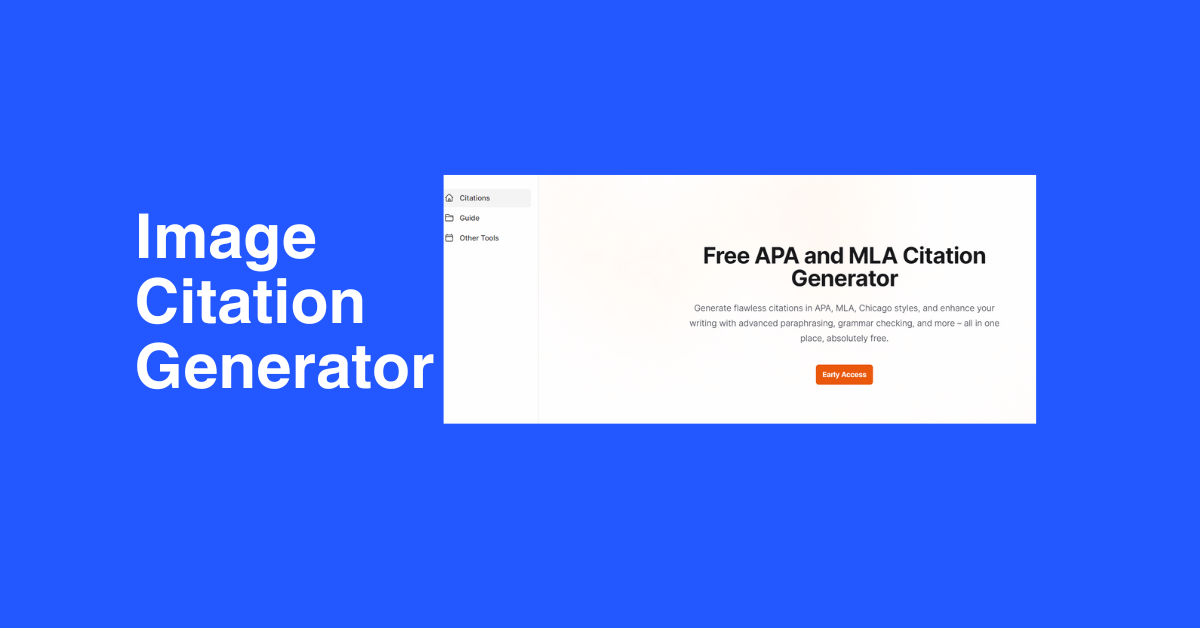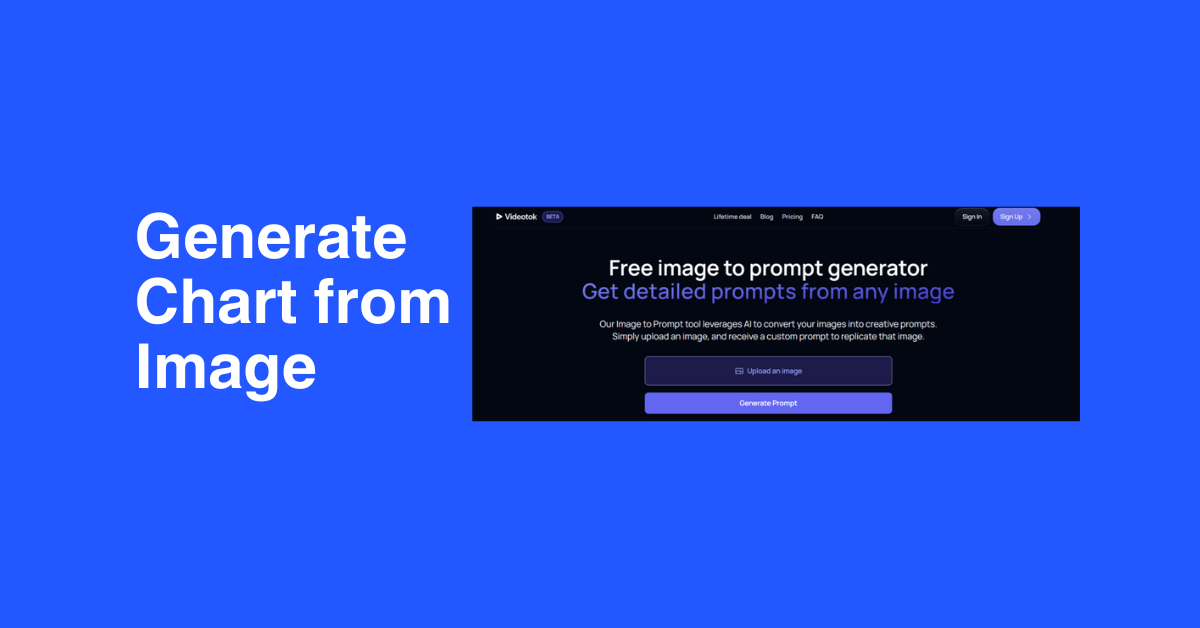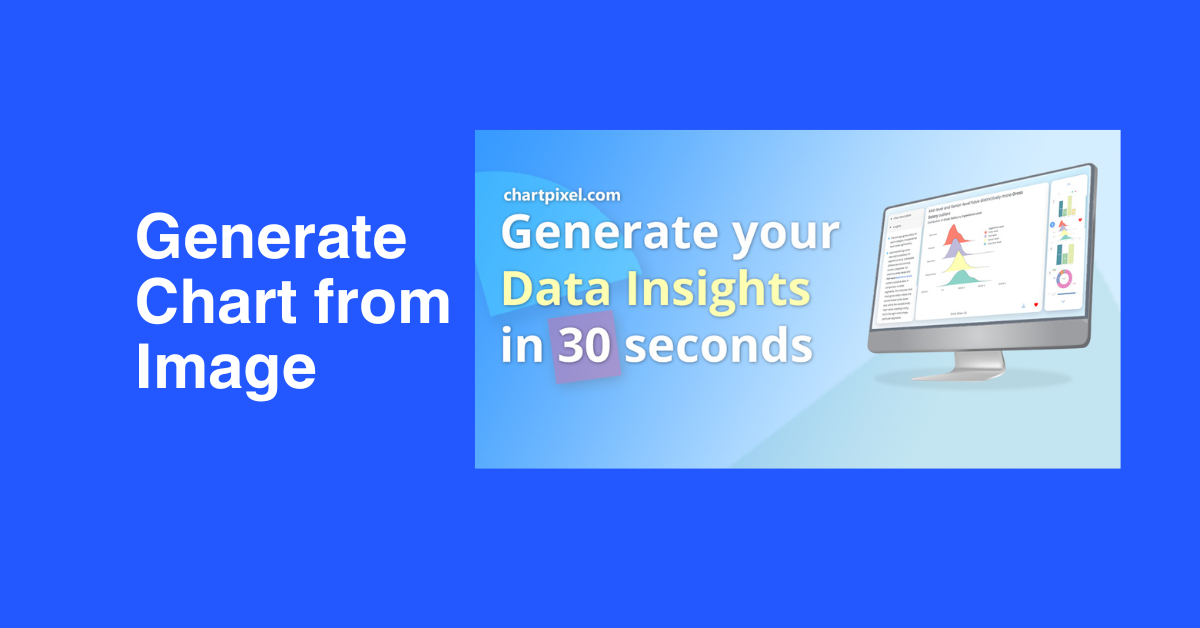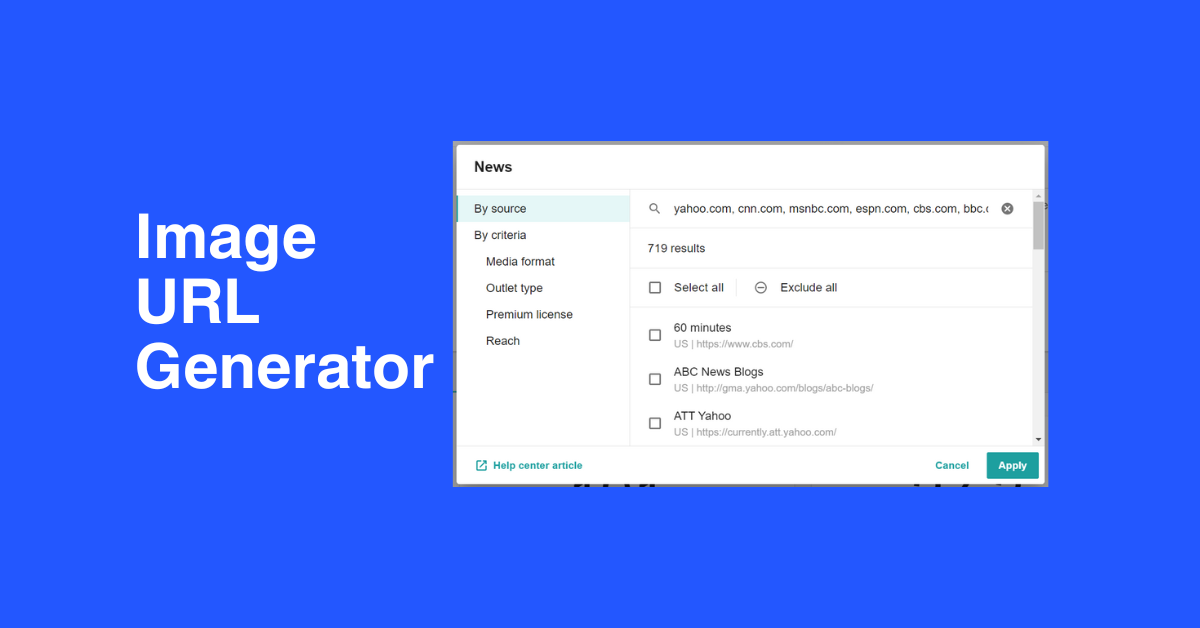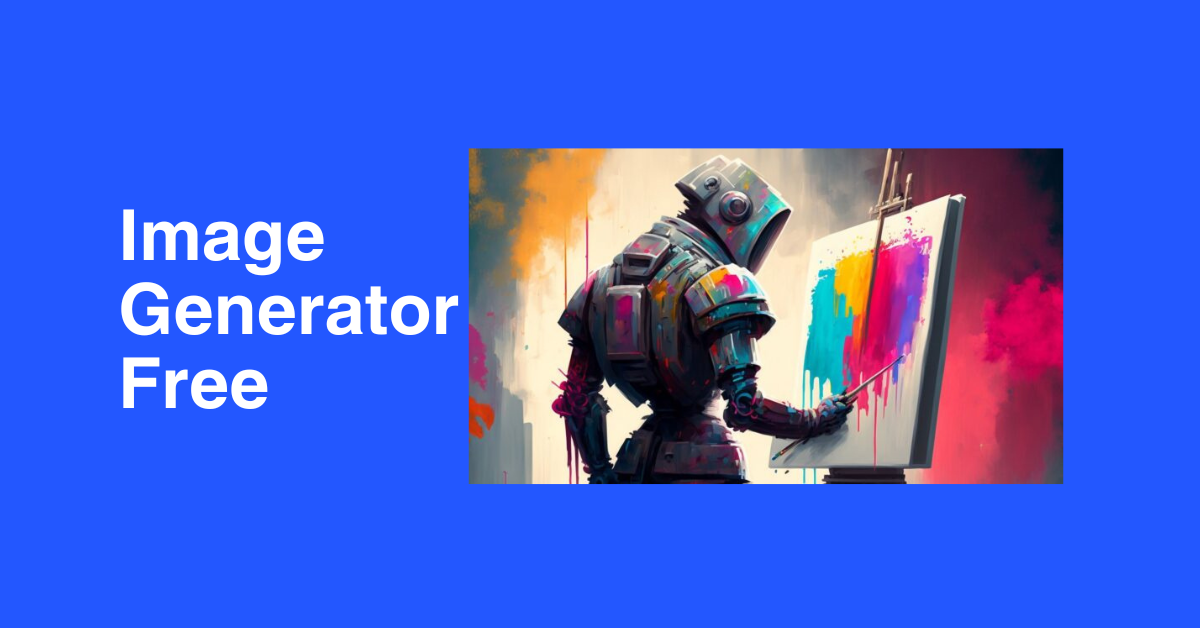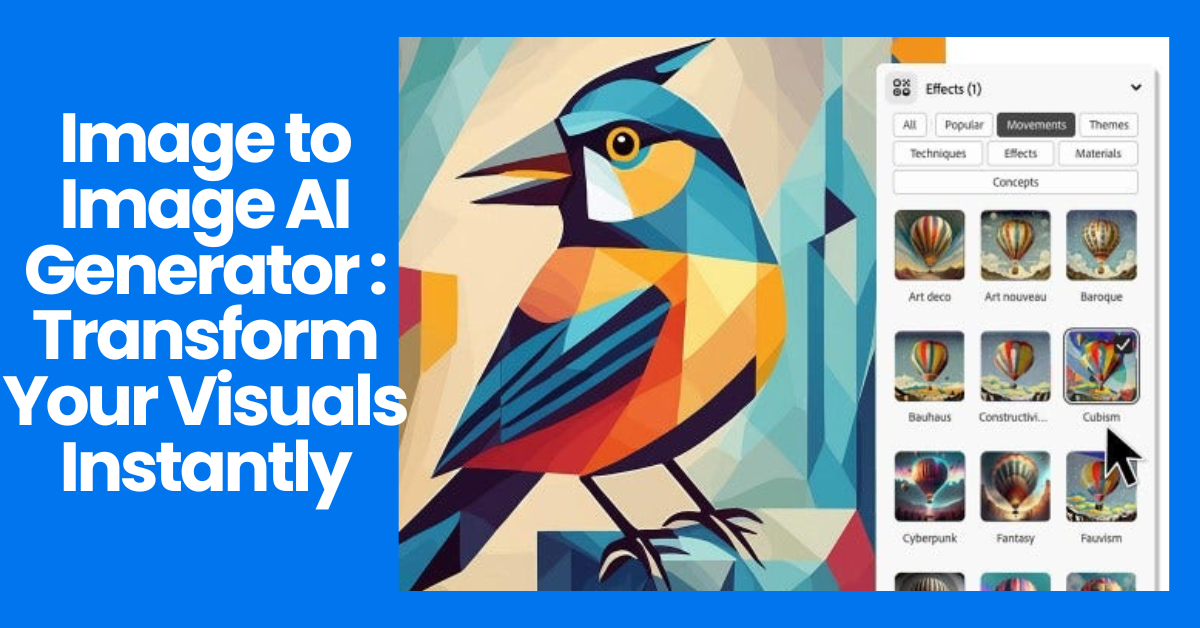
Image to Image AI Generator: Transform Your Visuals Instantly
- Image Generators
- November 5, 2024
- No Comments
In the ever-evolving landscape of technology, the Image to Image AI Generator is facilitating a profound transformation in creativity, driven by innovative advancements in artificial intelligence. One of the most groundbreaking developments in this realm is the emergence of image-to-image AI generators, which have begun to redefine how artists, designers, and technologists approach visual content creation. These tools not only empower users to generate unique imagery with minimal input but also blur the lines between imagination and reality. In this blog post, we will delve deeply into the world of image-to-image AI generators, exploring their mechanisms, applications, ethical considerations, and future trajectories.
Image to Image AI Generator: Revolutionizing Creativity and Efficiency

As the name suggests, image-to-image AI generators are specialized algorithms designed to manipulate or generate images based on an existing input image. The implications of such technology extend far beyond mere image editing; they reshape the entire creative process. By allowing users to input an initial image and subsequently alter or enhance it through various AI-driven techniques, these generators open a Pandora’s box of creative possibilities.
The primary framework for these generative models often involves deep learning architectures, particularly convolutional neural networks (CNNs). These networks are trained on vast datasets of images, enabling them to understand and learn intricate patterns, styles, and features. The result is a powerful tool capable of producing diverse outputs that can range from artistic renderings to hyper-realistic recreations.
The Transformation of Creative Processes
The introduction of image-to-image AI generators has transformed traditional creative processes across multiple fields.
The first significant change lies in efficiency. Where artists once spent countless hours perfecting their work, these AI tools can now generate high-quality images with just a few clicks. This efficiency does not come at the cost of creativity; instead, it serves as a catalyst for ideation. Artists can experiment more freely without the fear of wasting time, allowing them to explore new themes, styles, and compositions that they may not have considered otherwise.
Another transformative aspect is accessibility. Not everyone has the same level of artistic skill, yet these AI generators enable individuals to bring their visions to life, democratizing art and design. Whether one is a seasoned professional or a curious novice, the ability to create visually compelling images has never been easier.
Expanding Artistic Horizons
With the aid of image-to-image AI generators, artists can push the boundaries of their creativity.
Traditional methods often limit artists to their inherent skills and techniques. However, by leveraging AI-generated images as starting points, artists can explore uncharted territories. They can combine their artistic vision with the machine’s capabilities, resulting in unique aesthetics that might not have emerged through conventional means. This collaborative approach fosters a new dialogue between human creativity and machine intelligence.
Moreover, this technology enables experimentation with different styles and genres. An artist can take a simple sketch and transform it into a vibrant digital painting or reimagine a photograph in the style of a famous painter. The fusion of human input and AI-generated output leads to infinite variations, showcasing a fresh perspective on traditional concepts.
Understanding the Technology Behind Image-to-Image AI Generators

At the core of image-to-image AI generators lies a complex interplay of algorithms and data. To appreciate their functionality fully, it’s essential to understand the underlying technology that powers them.
The foundation of most image-to-image AI generators is built upon deep learning, particularly using neural networks that can recognize and synthesize visual information in highly sophisticated ways. Two prominent architectures in this space are Generative Adversarial Networks (GANs) and Convolutional Neural Networks (CNNs).
Generative Adversarial Networks (GANs)
GANs represent a revolutionary approach to generating images using two competing neural networks: the generator and the discriminator.
The generator creates new images based on the input it receives, while the discriminator evaluates those images against a set of real images to determine authenticity. Through this adversarial process, both networks continuously improve until the generated images become indistinguishable from real ones.
This dynamic interaction allows GANs to produce remarkably realistic images, making them a popular choice in the field of image generation. Artists and designers can utilize this model to enhance their original images or even create entirely new artworks inspired by existing designs. The challenge of GANs lies in training them effectively, as they require substantial computational resources and large datasets to achieve optimal results.
Convolutional Neural Networks (CNNs)
CNNs play a vital role in understanding and processing visual data. Unlike traditional neural networks, CNNs are specifically designed to analyze image data by utilizing convolutional layers that filter and recognize patterns within the images.
These layers allow the network to extract features like edges, textures, and shapes, enabling it to generate outputs that reflect the complexities of visual information. In image-to-image translation tasks, CNNs can be employed to modify elements of the input image while preserving its overall structure—ideal for applications such as style transfer and image enhancement.
CNNs can operate seamlessly alongside GANs, enhancing the quality and coherence of generated images. This synergy allows for more sophisticated image manipulation, catering to a wider range of creative needs.
The Role of Training Datasets
A crucial element of any AI model’s success is the dataset used for training.
For image-to-image AI generators, diverse and extensive datasets are essential for teaching the algorithm about various artistic styles, subjects, and contexts. These datasets can encompass millions of images representing different genres, eras, and artistic movements.
Quality matters significantly; poorly curated datasets can lead to biased or low-quality outputs. Furthermore, ensuring ethical considerations during data collection is paramount to avoid infringing on copyright or misrepresenting marginalized communities. Ultimately, the effectiveness of an image-to-image AI generator hinges on the richness and diversity of the training data it consumes.
Key Applications of Image-to-Image AI Generators: From Art to Design

The versatility of image-to-image AI generators extends across various industries, enriching artistic expression, design, entertainment, and marketing, among others. Below, we explore some key applications that exemplify their transformative potential.
Enhancing Artistic Expression
Artists can leverage image-to-image AI generators to enhance their creative practice in numerous ways. For instance, they can use these tools to rapidly iterate on ideas, explore variations, and refine their work without the traditional constraints of time and effort.
Moreover, AI-generated images serve as a source of inspiration, stimulating the creative process. An artist can input a rough sketch and, through the magic of AI, receive multiple stylistic interpretations, providing a broader palette to choose from. This synergy between human artistry and machine learning allows for a renewed exploration of aesthetics and concepts.
Furthermore, emerging artists benefit from AI-generated images by gaining visibility in a crowded marketplace. They can use these tools to develop distinctive portfolios that highlight their unique perspectives, helping them stand out within the contemporary art scene.
Revolutionizing Graphic Design
Graphic designers also find immense value in image-to-image AI generators. These tools streamline workflows, allowing designers to transform sketches into polished visuals more efficiently.
By inputting draft designs or concept illustrations, designers can explore various styles and color palettes, leading to refined branding materials, advertisements, or product designs. Moreover, AI can assist in generating mockups or prototypes, facilitating quick iterations and feedback loops during the design process.
Additionally, the integration of AI-generated elements into graphic design encourages playful experimentation. Designers can blend styles, adjust compositions, and create hybrid visual identities that capture attention and resonate with audiences.
Transforming Marketing Strategies
In the realm of marketing, image-to-image AI generators present new avenues for crafting engaging content. Businesses can utilize these tools to create eye-catching visuals that align with their branding efforts, capitalizing on the power of AI-driven imagery to connect with consumers.
From social media campaigns to digital advertisements, visually striking graphics can significantly enhance audience engagement. Marketers can quickly generate tailored visuals for specific demographics or occasions, helping brands stay relevant and responsive to market trends.
Moreover, the rapid production of high-quality visuals reduces costs and time needed for design processes, enabling teams to focus on strategic initiatives rather than getting bogged down in tedious iterations.
Innovating the Entertainment Industry
The entertainment industry also stands to gain from image-to-image AI generators, especially in fields such as film and video game development.
In animation and visual effects, studios can harness AI-generated images to create stunning backgrounds, character designs, or conceptual art, providing more options and reducing production time. By streamlining the creative process, artists can dedicate more energy to storytelling and character development.
Video game designers can utilize such technology to enrich their virtual worlds, generating atmospheric environments or realistic textures that elevate the player’s experience. As gaming continues to evolve, the incorporation of AI-generated assets will undoubtedly shape the future of interactive storytelling.
Popular Image-to-Image AI Generator Tools: A Comparative Analysis
With the growing popularity of image-to-image AI generators, a variety of tools have emerged in the market. Each comes with unique features catering to different user needs. Here, we’ll conduct a comparative analysis of some popular tools available.
DALL-E
DALL-E, developed by OpenAI, is famed for its ability to generate creative images from textual descriptions. It employs sophisticated algorithms to interpret the nuances of language and produce corresponding visuals. This innovative approach facilitates a higher degree of flexibility, allowing users to describe what they want and receive tailored images.
Beyond mere image generation, DALL-E can perform image manipulation tasks, altering existing images based on user prompts. Users appreciate its intuitive interface and capacity for generating whimsical, surreal imagery that challenges conventional artistic norms.
DeepArt
DeepArt excels in transforming photographs into artworks inspired by the styles of renowned artists. Through the application of neural style transfer, users can submit their images and select a specific artistic style, resulting in captivating renditions that merge personal photography with the signature aesthetics of masters like Van Gogh or Picasso.
DeepArt’s strength lies in its ease of use and the high-quality outputs it generates, making it a favorite among amateur photographers and artists alike.
Artbreeder
Artbreeder is a collaborative platform that enables users to blend multiple images, creating unique and surreal compositions. With simple sliders and parameters, users can fine-tune their artwork by combining traits from various images and adjusting characteristics like color, texture, and shape.
The communal aspect of Artbreeder fosters collaboration, as users can explore and remix each other’s creations. This interactivity promotes a sense of community while pushing the boundaries of image generation.
Runway ML
Runway ML is focused on bridging the gap between creatives and machine learning technologies. It offers a suite of AI tools, including image-to-image generators, that cater to artists, filmmakers, and designers. Its intuitive interface allows users to upload their images, apply various transformations, and generate new outputs effortlessly.
Runway ML also places a strong emphasis on collaboration, enabling users to share projects and workflows, fostering a creative environment conducive to innovation.
How to Use Image-to-Image AI Generators: A Step-by-Step Guide
If you’re ready to explore the world of image-to-image AI generators, you’ll find that many of these tools are designed to be user-friendly. Here’s a step-by-step guide to help you get started.
Selecting Your Tool
Before diving in, the first step is to choose the right image-to-image AI generator based on your specific needs. Research available tools, compare features, and identify the one that aligns best with your artistic goals. Consider factors such as ease of use, output quality, required inputs, and available styles.
Preparing Your Input Image
Once you’ve selected a tool, prepare the image you want to use as input. If your generator accepts text-based inputs, write a clear and descriptive prompt outlining what you wish to see.
If you’re working with an existing image, ensure it is of high quality to yield better results. Take note of the elements in the image that may need adjustment, as this will help inform your subsequent choices throughout the creative process.
Engaging with the Generator
With your input image or description ready, follow these steps to engage with the AI generator:
- Upload or Input: Depending on the tool you’ve chosen, upload your image or enter your descriptive prompt.
- Choose Settings: Many generators offer settings to customize the output, such as style selection, color adjustments, and detail refinement. Explore these options and make adjustments as needed.
- Generate Output: Hit the “generate” button and let the AI work its magic. Processing times may vary depending on the complexity of the task and the tool’s capabilities.
Reviewing and Refining Outputs
Once the output is generated, carefully review the results. Assess whether the rendered image aligns with your expectations and vision.
If you’re satisfied, consider saving or exporting the image for further use. Alternatively, if the generated image doesn’t meet your criteria, revisit the input or settings, and try again. Iteration is key to achieving desired results.
Combining and Editing Images
Don’t hesitate to combine AI-generated images with your original work or other elements. Utilize image editing software to layer, composite, or adjust colors as needed. This blending process can lead to unique outcomes that embody your artistic vision while incorporating AI elements.
Ethical Considerations in the Use of Image-to-Image AI Generators
While the benefits of image-to-image AI generators are compelling, their use raises important ethical questions that must be addressed responsibly.
Copyright and Ownership Issues
One of the foremost concerns relates to copyright ownership. When an AI generates an image based on an existing artwork or photograph, questions arise regarding authorship and intellectual property rights. Who owns the rights to the generated image—the original creator, the AI developer, or the user who prompted its creation?
Artists must navigate these murky waters carefully, ensuring they respect copyright laws and seek proper licenses when necessary. Many platforms are beginning to implement guidelines to clarify ownership rights and usage permissions, but it’s crucial for users to remain informed.
Bias and Representation
Another ethical consideration involves bias in AI-generated outputs. AI systems learn from historical data, and if the training datasets lack diversity or contain biases, the outputs can reflect those limitations. This situation can perpetuate harmful stereotypes or misrepresent marginalized communities.
Users and developers must prioritize inclusivity and fairness in the datasets utilized for training AI models. Curating diverse and representative datasets will foster equitable AI practices, ensuring that generated images do not reinforce societal biases.
Authenticity and Creativity
Finally, the use of image-to-image AI generators raises questions about authenticity and the nature of creativity itself. As machines increasingly participate in the creative process, some may argue that AI-generated works lack the emotional depth and human touch inherent to traditional artistry.
While it’s essential to acknowledge the value of human creativity, it’s equally crucial to embrace the idea of collaboration between humans and machines. AI should not be viewed as a replacement for artists but rather as a tool that complements and enhances their abilities.
The Future of Image-to-Image AI Generators: Trends and Innovations
Looking ahead, the future of image-to-image AI generators holds tremendous promise, driven by ongoing advancements in machine learning, computing power, and dataset curation. Several trends and innovations are poised to shape the evolution of this technology.
Improved Interactivity and User Experience
As technology progresses, we can expect greater interactivity in image-to-image AI generators. Future tools may incorporate natural language processing capabilities, enabling users to communicate more intuitively with AI systems. This evolution could lead to more fluid collaborations between artists and machines, where the creative direction feels seamless and organic.
Furthermore, enhanced user interfaces will likely emerge, making tools more accessible for individuals with varying levels of technical expertise. Simplified workflows and real-time previews will empower users to explore their creativity without facing technological barriers.
Integration of Augmented and Virtual Reality
The integration of image-to-image AI generators with augmented reality (AR) and virtual reality (VR) experiences has great potential for expanding creative possibilities. Imagine being able to visualize AI-generated landscapes or characters in immersive environments, enriching storytelling and user engagement.
As AR and VR technologies continue to grow, creators will have unprecedented opportunities to incorporate AI-generated visuals, resulting in dynamic experiences that captivate and inspire audiences.
Advancements in Style Transfer Techniques
Ongoing research in style transfer techniques is anticipated to yield even more sophisticated results. As AI systems learn to emulate artistic techniques with increasing finesse, artists will be able to explore a broader spectrum of styles, from classical to contemporary, all within the context of their original works.
These advancements will challenge conventional notions of artistic boundaries, allowing creators to merge genres and styles in imaginative ways.
Customization and Personalization
In a world increasingly defined by individual preferences, the future of image-to-image AI generators will likely involve greater customization and personalization options. Users may have the ability to train their unique models based on their artistic preferences, resulting in outputs that resonate more profoundly with their vision.
Such personalization can foster a more intimate relationship between creators and technology, encouraging users to mold AI to suit their unique styles while retaining the essence of their artistic identity.
The Impact of Image-to-Image AI on Artistic Practices and Industries
As image-to-image AI generators continue to proliferate, their impact on artistic practices and industries is becoming increasingly evident. These tools are reshaping not only how art is created but also how it is perceived and valued.
Redefining the Role of the Artist
The advent of AI-generated images challenges established notions of authorship and artistic intent. As machines begin to contribute to the creative process, artists must reevaluate their roles in shaping meaning and emotion within their work.
Rather than diminishing the value of human creativity, this evolution elevates the artist’s role as a curator and collaborator. Artists will need to harness their intuition, emotions, and insights to guide AI-generated outputs towards meaningful narratives that resonate with viewers.
Shifting Industry Standards
The widespread adoption of image-to-image AI generators has the potential to disrupt industry standards across fields such as advertising, fashion, and entertainment. The speed and efficiency of AI-generated content can lead to rapid changes in workflows, potentially diminishing the reliance on traditional artistic labor.
However, this disruption may also give rise to new job opportunities centered around AI oversight, content moderation, and creative strategy, as organizations seek to balance the benefits of automation with the need for human expertise and creativity.
Evolving Market Dynamics
Market dynamics are shifting as consumers increasingly demand visually striking content. The ability to generate high-quality images swiftly can position businesses to respond to trends faster and innovate their offerings.
As AI-generated imagery becomes more prevalent, consumers may also start to develop preferences for specific styles or types of AI-generated content, prompting businesses to adapt their strategies accordingly. The intersection of consumer behavior and AI-generated content will undoubtedly shape the marketing landscape for years to come.
Exploring the Benefits and Limitations of Image-to-Image AI Generators
As with any technology, image-to-image AI generators come with their own set of benefits and limitations. Understanding these aspects is crucial for navigating this evolving landscape.
Benefits of Image-to-Image AI Generators
One of the most significant advantages of image-to-image AI generators is their ability to augment creativity. By acting as a source of inspiration, these tools provide artists and designers with fresh perspectives and ideas that might not have emerged through traditional methods.
Additionally, the efficiency gained through the rapid production of images saves time and resources, empowering creators to focus on refining their concepts rather than getting stuck in lengthy production cycles.
Moreover, these tools democratize art and design by making visual creation accessible to individuals with varying skill levels. Aspiring artists can experiment and express their creativity without needing extensive training or experience.
Limitations of Image-to-Image AI Generators
Despite their advantages, image-to-image AI generators also face limitations. One notable concern is the risk of over-reliance on AI-generated outputs, which could stifle genuine creativity and originality. Creatives must strive to strike a balance between leveraging AI technology and cultivating their unique voices.
Additionally, the quality of output can vary significantly based on the input data and user decisions. While some generations may yield stunning results, others may fail to capture the intended vision, necessitating iterative refinements.
Furthermore, as discussed earlier, ethical considerations related to representation, bias, and copyright pose challenges for users looking to navigate this new terrain responsibly.
Image-to-Image AI: Bridging the Gap Between Imagination and Reality
As we’ve explored throughout this blog post, image-to-image AI generators serve as bridges between imagination and reality. They empower individuals to manifest their visions into tangible forms, transcending traditional barriers associated with artistic creation.
By integrating human creativity with advanced algorithms, we unlock a collaborative potential that enriches artistic expression. The ability to visualize ideas in real-time, explore variations, and experiment with styles fosters a creative process that thrives on exploration and discovery.
As we move forward in this exciting frontier, it is crucial to maintain a sense of responsibility and awareness. Balancing ethical considerations with innovative possibilities ensures that image-to-image AI generators continue to serve as tools for empowerment, inclusivity, and artistic exploration.
Conclusion
In conclusion, image-to-image AI generators are revolutionizing the way we conceive, create, and interact with visual content. From enhancing artistic expression to transforming industries, these tools are ushering in a new era of creativity marked by collaboration between human ingenuity and machine intelligence.
As we continue to explore the depths of this technology, it is essential to engage with it thoughtfully and ethically, maximizing its benefits while acknowledging its challenges. The future is bright, and with continued innovation and responsible practices, we can look forward to witnessing a harmonious blend of creativity and technology that inspires generations to come.
Looking to learn more? Dive into our related article for in-depth insights into the Best Tools For Image Generation. Plus, discover more in our latest blog post on Retro text to Image Generator. Keep exploring with us!
Related Tools:
Image Generation Tools
Video Generators
Productivity Tools
Design Generation Tools
Music Generation Tools
For more AI tools, explore all categories by clicking here.

